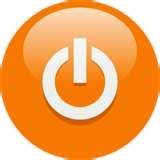
Should you shut down, sleep, or hibernate your laptop? Should I Turn Off my Computer or put it to sleep? How to stop a computer from hibernating?

The state of the computer upon resumption is the same before it enters hibernate or sleep mode. Similar to shut down, a hibernating system needs more time to start up. On start-up, data is read back to the RAM which takes about seconds or more. Two computer modes that require distinguishing are sleep mode and hibernate , which are often used synonymously but are not in fact the same thing. Sleep mode stores the documents and files you are operating into the RAM, using a small amount of power in the process.
To see if your computer supports hibernation , you can go to the Power options control panel applet again and again into the advanced settings as you did with sleep settings. So, sleep mode does reduce power consumption, but not as much as hibernate mode. In short, you should use sleep mode over hibernate when you can easily find a power source near you.
The time it takes is largely dependent on the hardware in. Does putting your computer to sleep damage it? We cover all the pros and cons of the different ways you can give your laptop a well-deserved rest, and show you when to choose one option over the others. As with hibernation mode, you will not be able to use your computer when it’s asleep. While sleep puts your work and settings in memory and draws a small amount of power, hibernation puts your open documents and.
Time is a precious resource, and you don’t. However, if we wish for an even quicker startup, or want to keep all the programs we were working on open, the sleep and hibernate functionalities sure beat a full power off. The computer automatically goes into hibernate mode to save your state when you put your computer to sleep and its battery becomes critically low. Of all the power-saving states in Windows, hibernation uses the least amount of power. Both are very quick with an SSD.

Hibernate is slower to resume from than sleep. But how much power does the average modern Windows desktop computer use while sleeping or hibernating? Whether a PC should be set to hibernate , sleep , or be.
When the computer enters into hibernate or sleep , the Power button or LED blinks. To resume, press the Power button again and the computer should return to the same condition it was in before it went into hibernation or sleep. What the hibernation mode consume is disk space, and the Windows hibernation mode can simply occupy a few GBs of space, and not only that as we already hinted earlier that when you wake up your computer from hibernation mode, the process is usually a bit slower than when you wake it from the sleep mode.
If you plan on only resting the. No power in needed to maintain in hibernate mode but a small amount of power is needed to maintain the sleep mode (as the work is saved in RAM). Explained : there are three power options available for Windows computer.
When you shut down your computer, the charge is cut down from all the computer components. I turn mine off every night. I hibernate because it starts up faster then booting up from a shutdown. An more importantly, which one.

The idea is that when they’re use your computer will either shut down faster, start up faster, or both. It saves the context in the hard drive and as soon as the computer is on, it loads the data from hard drive to the RAM and so it takes more time than sleep but less than the time taken to on the computer when it was shutdown. What is the difference between sleep mode and hibernate ? The computer does not go into sleep mode, does not wake up from sleep mode, or wakes up from sleep mode unexpectedly.
Dosto kai bar kya hota hai ki jab hum apne computer pr kaam kar rhe hote hai aur jab kaafi saari files hum apne PC me open karke rakhte hai, is dauran yadi hum aadhe ghante ka break lena hota hai to hum apna PC band bhi nhi karte hai. You can put your computer to sleep to save electricity and battery power.
No comments:
Post a Comment
Note: Only a member of this blog may post a comment.